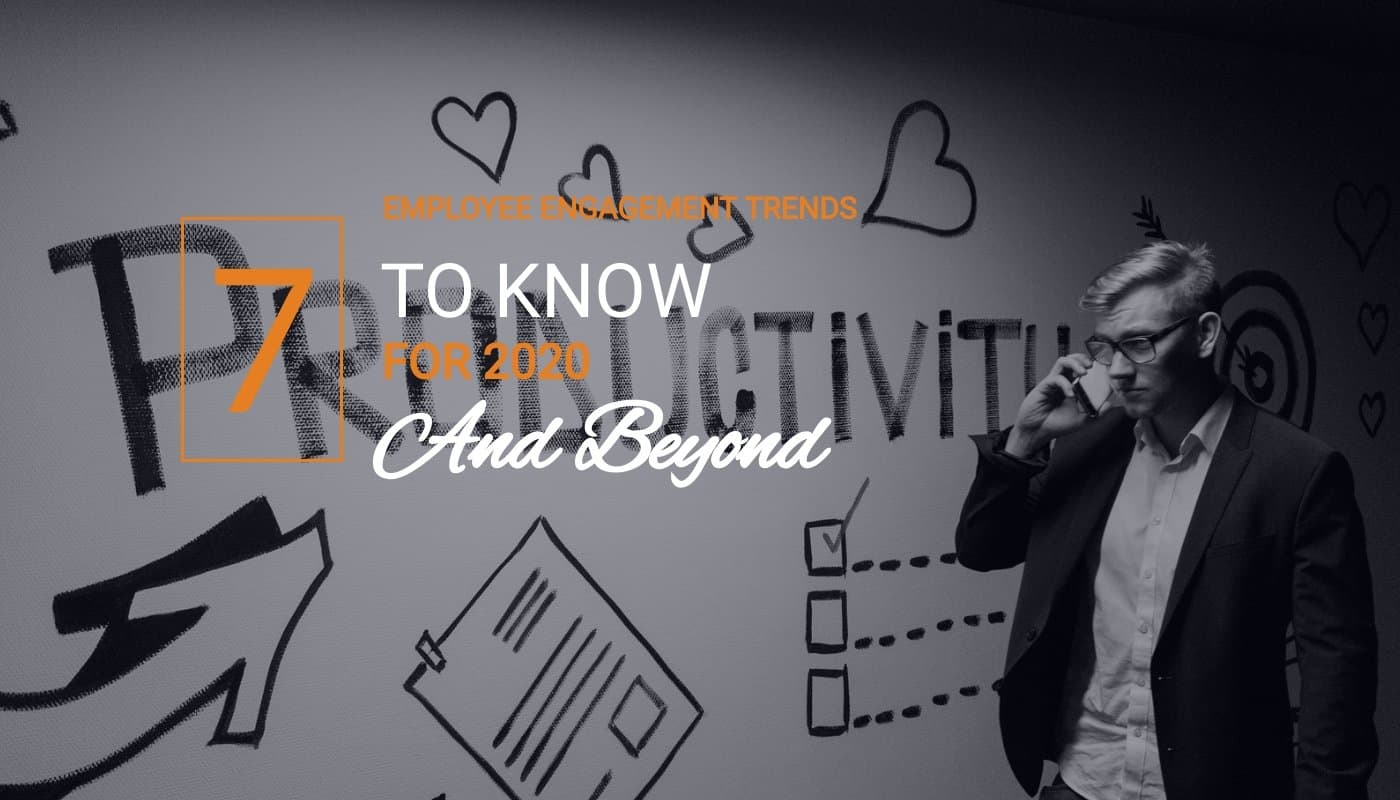At the dawn of a new decade, retaining top talent has never been more critical—it has also never been more challenging. A recent survey found that 75 percent of employees in the United States does not plan to stay at a job for five years.
Talent retention is not the only important issue related to employee satisfaction. Study after study has shown that organizations with engaged employees outperform those with disengaged workers. McKinsey found that productivity improves 20 to 25 percent in organizations with engaged employees. But with the “war for talent” raging, how do HR professionals and managers keep their most valuable employees from jumping to a competitor?
Fortunately, while employee engagement and retention have never been more challenging, there are also more ways than ever before to combat these issues. What follows is a list of solutions and strategies to help your organization navigate the current employment landscape:
Shift to Employee “Tending”
In a recent piece about HR trends, Forbes points to a shift that successful organizations are making from employee management to employee tending. Tending to employees includes everything from improving wellness programs, providing daycare for parents, and placing a premium on performance recognition.
In the day-to-day stress of work, even well-meaning organizations can fall into the trap of treating workers like “machines.” But employees need to feel that their work and loyalty are appreciated to remain invested in a company’s success; once that investment fades, it is exceedingly challenging to ignite again.
Leverage Technology
Just as technology is helping organizations become more efficient in back-office operations, communications, and a host of other areas, the right solution can be invaluable for increasing employee engagement.
As an example, if you have an employee recognition program in place but are finding it challenging to manage logistics, an employee recognition platform may be a wise investment. The same is also true if your organization is looking to implement a recognition program for the first time and is concerned about managing it. A modern, high-performing platform can provide a host of valuable features and functionality, including:
Social recognition that celebrates success and motivates peers
Gamified badges and trophies that highlight milestones and achievements
Leaderboards and metrics tracking to encourage friendly competition
Internal nomination programs for peer-to-peer recognition
Global awards galleries
Survey tools that provide insight and drive change
One thing to keep in mind if you are considering investing in an employee recognition or engagement platform is that ease-of-use is paramount. Getting your HR department—or anybody else—actually using the platform is the only way to get real value from it, so be sure to think about the user experience and ease of adoption when evaluating solutions.
Focus on Data
We’ve all heard it—making data-driven decisions is the best way to ensure organizational success. Data is just as crucial to employee engagement as it is in other areas, so if you don’t have the information you need already, you can start by conducting a clear and relevant employee engagement survey that helps you understand what your employees want. Even if you have previously undertaken this kind of survey, it’s best to keep your data fresh by continuing to send them to employees every so often.
You can also do some impromptu research by merely taking a walk around the office and getting some insight from employees that way. This is a great way to show them that you value their opinions and provides a focus on where to direct attention to creating a positive workplace culture.
The critical thing to remember is that asking employees what they want directly is the only way to know honestly. It’s easy to sit in a room and guess, but often that is how organizations get themselves into trouble. For example, at some organizations, compensation may be the overwhelmingly most important factor in employee satisfaction. But at other companies, depending on the culture and nature of the employees, benefits or social awareness may be more critical.
Continue Working Towards Inclusivity and Diversity
Inclusivity has become a buzzword in recent years, but it is still crucial for organizations. Inclusiveness can mean a lot of things—and that’s the point. Whether you are talking about making employees feel comfortable in a work environment or striving for diversity in leadership, making employees feel like they have a stake in the organization is crucial.
Many organizations have made strides in this department, but there is still a long way to go. For example, many organizations still break on-boarding or professional development sessions into “executive leadership,” “management,” and everybody else. While some strategic sessions can and should be segmented this way, too much of it can lead to silos and the sense that a relatively small number of individuals have complete control over an organization’s direction.
Diversity is also a critical piece of inclusiveness. The days where employees would look past a homogenous executive team have come to an end. Conversely, nurturing, and promoting diverse internal talent lets employees at every level know that an organization is invested in its workers’ future.
Be Transparent and Communicative
Nothing hurts employee engagement more than a lack of transparency. It is nearly impossible for an employee to feel good about his or her employer if it can’t trust that the organization has workers’ best interests at heart. Of course, transparency is not always smooth; sometimes, it means telling hard truths. For instance, no manager wants to deliver the message that an organization has had a down quarter and has to bounce back to avoid cuts.
But even in a situation like this, clear communication is essential. Letting people know that information upfront builds trust and, perhaps more importantly, allows people to come together to create change. Transparency and trust-building are especially relevant today in the age of employee reviews. On sites like Glassdoor, the highest-rated companies are often the ones whose employees feel like their employers were honest with them.
Emphasize Flexibility
Whenever possible, organizations should try to give employees as much work-life balance as possible. Every employee has different needs, and providing an option to work-form-home or choose unconventional hours lets employees know that they matter personally to an organization. In the long-run, these small “concessions” can help boost employee productivity.
Flexibility is also valuable in retaining talent. Aside from keeping employees happy in their roles, it also helps prevent competitors from poaching talent by offering more personalized work experience. Often, even if an organization is willing to match work-life benefits that a competitor offers, if the employee is already leaning towards leaving, it is already too late.
Formalize Your Employee Recognition Program
A recognition program is one of the best ways to ensure employee engagement and to retain top talent. But it is important to remember that creating and maintaining a successful program can be more complicated than it looks. In some cases, organizations jump headfirst into building a program without a strategic approach or the necessary tools.
One of the ways to avoid losing control of a recognition program is to formalize the program at the outset. Putting a structure in place ensures that the program gets embedded in your organization and the culture. Actively encouraging employees at every level to participate in helping the program grow helps make it stick in the long term.
As time progresses, be sure to keep the program high profile by periodically celebrating employee achievements or service time. As with any other initiative that a company launches, the success of an employee recognition program depends as much on the employees at the company, as it does on HR or management.
Are you looking for ways to build employee engagement? We would love to show you how CoreCentive can help you achieve your goals! Click here to get in touch and get started today!
![]()


